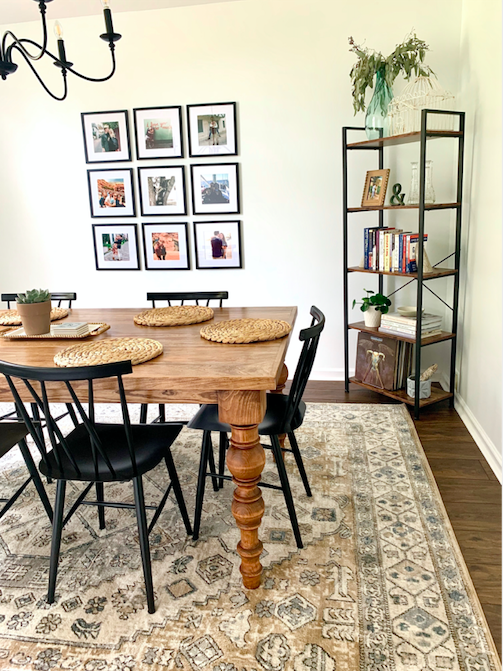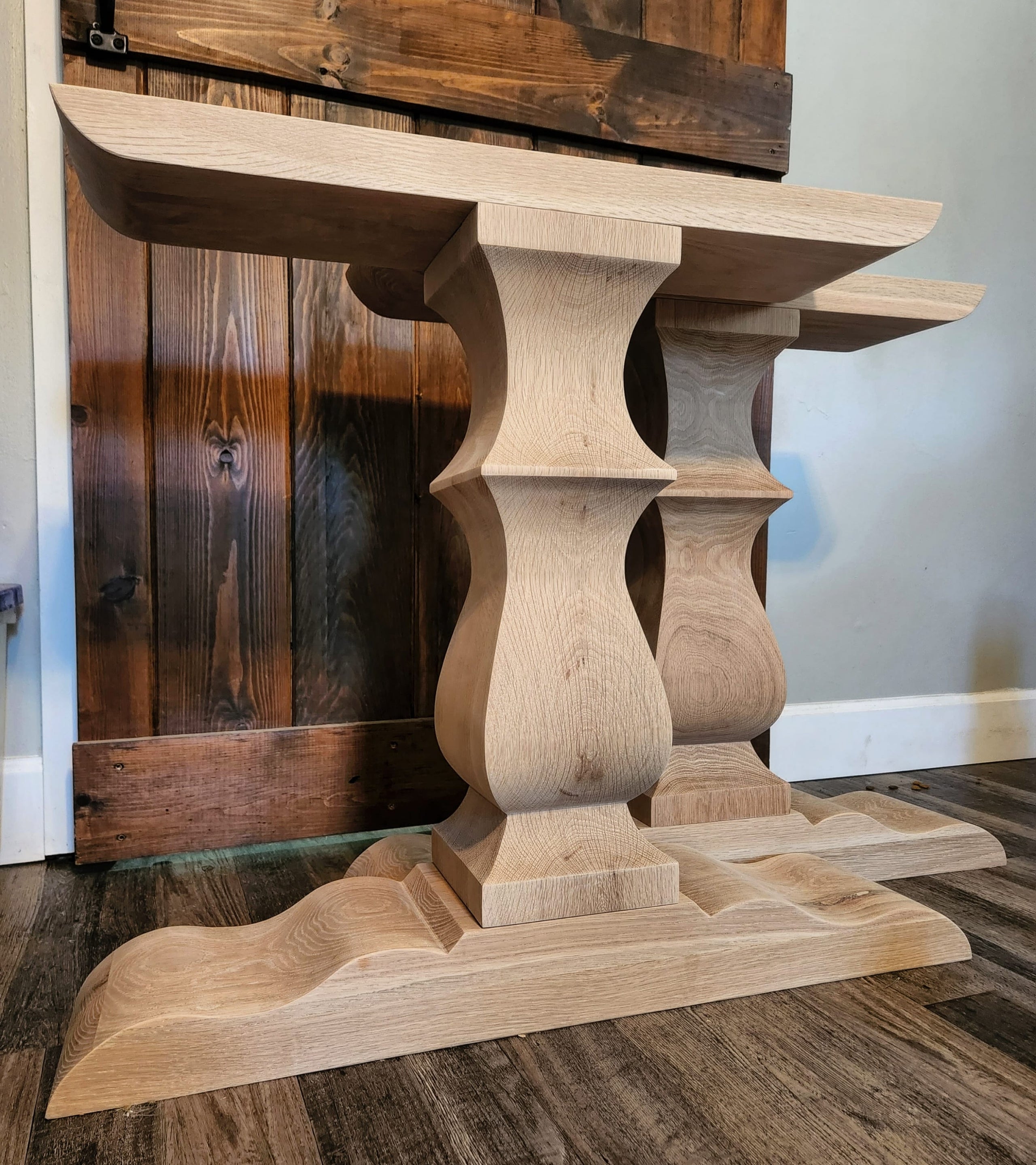From Standard to Modern: Discover the Perfect Eating Space Table Legs for Your Style
While traditional styles such as cabriole and transformed legs evoke a sense of ageless elegance, modern styles like hairpin and geometric alternatives offer a possibility for striking visual passion. As you consider these aspects, the inquiry remains: just how can you flawlessly integrate these diverse leg designs to produce a harmonious eating experience?
Comprehending Table Leg Styles
The variety of dining-room table leg styles can substantially affect both the appearances and functionality of the area. Each leg style contributes distinct functional features and visual aspects, satisfying diverse layout choices and usage requirements. Comprehending these styles is vital for selecting the appropriate table that lines up with your general interior decoration vision.
For example, conical legs supply a tidy, traditional appearance that can enhance an area's elegance, while stand bases offer stability and optimize legroom, making them optimal for smaller sized spaces. Hairpin legs, a characteristic of mid-century contemporary style, introduce an industrial panache, enabling a ventilated, open feeling. In a similar way, trestle legs evoke rustic charm, giving robust assistance and a feeling of eternity.
Additionally, the choice of products plays a considerable role. Wood legs can bring warmth and appearance, whereas steel alternatives typically convey a streamlined, contemporary ambiance. Eventually, understanding table leg designs is necessary for creating a cohesive dining area that reflects individual style while ensuring functionality and comfort. By thoughtfully thinking about these elements, you can improve both the visual and practical allure of your eating area.
Conventional Table Leg Options
When picking dining-room table legs, traditional choices commonly personify timeless elegance and craftsmanship. These designs reflect a rich heritage and a dedication to high quality, making them perfect for those who appreciate timeless visual appeals.
Among one of the most iconic traditional leg styles is the cabriole leg, characterized by its stylish bent shape. This design typically includes ornamental makings and is most commonly found in Queen Anne and Chippendale furniture. An additional preferred option is the turned leg, which boasts a series of smooth, rounded forms that supply a traditional appearance while preserving security.
Additionally, the straight leg, while basic, uses a strong and basic framework that can mix flawlessly with a selection of tabletop designs. For those drawn to ornate outlining, claw-and-ball feet legs evoke a feeling of splendour and can work as a stunning centerpiece in any type of eating area.
Last but not least, stand bases, although not purely legs, supply an alternate standard choice that enables adequate legroom and can be magnificently sculpted. Each of these traditional leg styles adds to the total atmosphere of an eating area, marrying function with visual appeal.

Modern Table Leg Layouts
Modern table leg designs supply a varied series of styles that stress ingenious materials and tidy lines. These styles often focus on functionality while working as striking focal points within an eating space. Minimal visual appeals are prevalent, with legs crafted from products such as steel, glass, and crafted wood, which add to a contemporary and ventilated feeling.
One preferred design is the barrette leg, identified by its slender, conical structure that gives stability without overwhelming the tabletop (dining room table legs). This design is usually found in mid-century modern furnishings and can easily match various eating table directory forms. One more pattern is making use of geometric shapes, where legs might handle unbalanced or angular kinds, adding visual rate of interest and a touch of creativity

Blending Designs for One-of-a-kind Spaces
Often, homeowners seek to create special dining areas that mirror their individual style by blending numerous design components. This approach permits for the consolidation of varied aesthetics, resulting in an unified yet distinctive environment. Coupling a rustic wood table with smooth, contemporary metal legs can create an eye-catching comparison that raises the area's general allure.
Additionally, integrating vintage table legs with modern table tops can stimulate a sense of background while keeping a modern perceptiveness. Such combinations not just display individual preference yet additionally encourage creativity, enabling home owners to curate a room that really feels both personal and inviting.
Shade plays an essential function in this blending process; picking table legs that match or contrast with the existing color design can enhance aesthetic interest. Whitewashed legs can soften the daring of a dark table surface, creating a well balanced aesthetic.
Tips for Choosing the Right Legs
Choosing the right table legs is important for achieving both get more performance and visual appeal in your eating space. Begin by considering the overall design of your space. Standard settings gain from legs that include elaborate makings or transformed designs, while modern spaces may call for smooth, minimalist styles.
Following, evaluate the height and security of the legs. dining room table legs. Common table vary between 28 to 30 inches in elevation, so make certain the legs enhance this measurement for comfort. Additionally, robust materials, such as wood or steel, can boost stability and durability
Assess the leg shape as well-- alternatives include right, tapered, or pedestal layouts. Straight legs supply a traditional appearance, while conical legs can include a touch of style. Pedestal bases provide adequate legroom and are excellent for smaller sized rooms.
Final Thought
In recap, picking the perfect dining-room table legs needs cautious consideration of both modern-day and conventional designs. Standard options such as cabriole and transformed legs offer timeless sophistication, while modern styles like hairpin and geometric forms offer a contemporary touch. By integrating leg design, elevation, and material with the overall decor, a cohesive and inviting ambience can be accomplished. Inevitably, the picked table legs must show the wanted aesthetic, improving the dining experience within the room.
The selection of eating space table leg designs can significantly influence both the aesthetics and capability of the space. Inevitably, comprehending table leg designs is important for developing a cohesive dining location that mirrors personal style while making certain functionality and convenience.One of the most renowned conventional leg styles is the cabriole leg, defined by its graceful rounded form. Straight legs offer a timeless look, while tapered legs can add a read touch of elegance.In recap, picking the perfect dining area table legs needs careful consideration of both standard and contemporary designs.